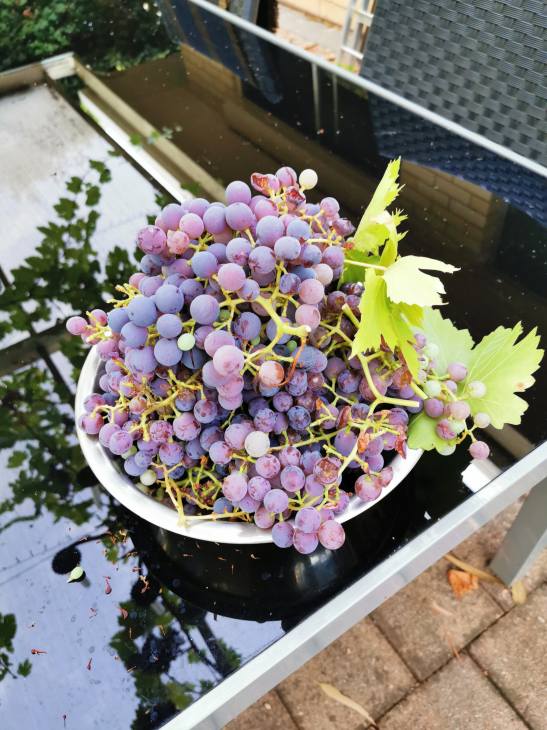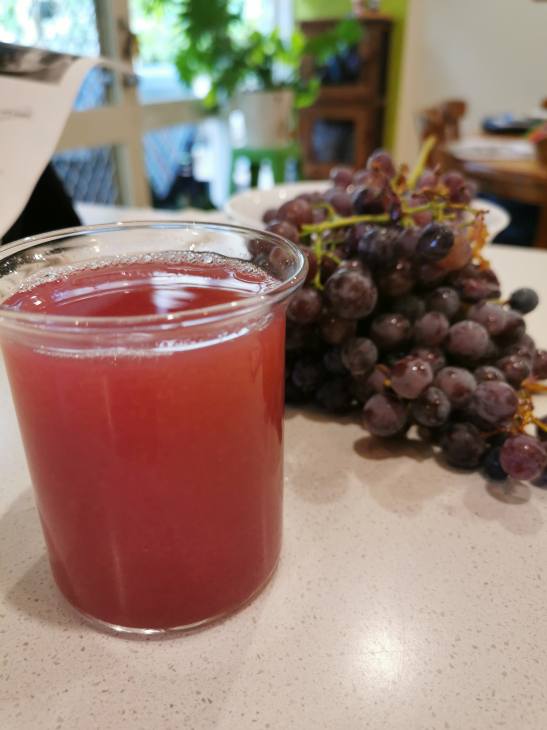
Dark red grapes have long been known for their antioxidant (resveratrol) properties. Red wine is made from dark grapes and some research suggests that drinking a small glass of red wine several times a week may provide some health benefits.
Antioxidants are an important component of a healthy diet as they aid in removing free-radicals which are molecules in the body that can damage cells and cause inflammation. High amounts of free-radicals is called oxidative stress, and while this is a normal metabolic process, high oxidative stress can contribute towards many disease states. A healthy wholefood diet high in fresh fruit and vegetables can reduce the amount of oxidative stress, protecting from conditions such as heart disease, some cancers, lung disease, diabetes and even osteoporosis.
However, in our fast-paced busy world, our bodies are often overwhelmed with toxins from the air we breathe, the water we drink, processed foods, cleaning products, beauty products and chemicals that are sprayed on crops to make them resistant to weed killing herbicides, speed up plant growth and hasten ripening.
Grapes are one of the heaviest sprayed fruits, alongside strawberries, due to their vulnerability to mould from frosts and moisture. Farming practices of grapes therefore, can make this otherwise incredibly healthy fruit, another burden on the liver as it works towards ridding the body of the toxic alcohol (in red wine) as well as the toxic chemicals used to grow them.
Another consideration is the genetic modification of our modern day fruit, changing the shape and content of the fruit to make them more convenient to eat or to adapt to drought conditions. These days it’s hard to find a watermelon or grape with seeds in them, as shoppers gravitate towards seedless options. How this modification of fruit has affected its nutrient component is a little unclear.
I am blessed to have planted some vine cuttings from my father-in-law many years ago, from his old dark grape vine. He gave me a heap of sticks and told me to simply push them into the ground wherever I wanted the vine to grow. To my surprise, come spring, these sticks began to shoot and within a few years, our outdoor entertaining area was covered in a beautiful vine with luscious dark red grapes. While the grapes taste amazing, the amount of pips in each grape makes them a little uncomfortable to eat and yet, growing up, that was all we had access to.
So, to be able to harness the nutrient properties of these heirloom grapes, without the hassle of the pips, I made a grape juice by simply gently heating the grapes in a large pot with a little water, then straining the juice through a sieve. This makes it easier to extract the juice, although it does lower the nutrient content somewhat from the heating process. Another option would be to use a juicer, however, high speed juicers will also destroy some of the nutrient content from the heat generated in the juicing process.
Either way, the end result is a beautiful drink free from chemical sprays and alcohol. While there is no added sugar, it’s worth noting that the natural sugars from the fruit are of course present, so we still need to be careful not to drink too much all at once, but that can be difficult because it tastes just so incredibly delicious.
Another note to consider is that the highest amount of the resveratrol is actually in the skin and pulp of the grape. So the best and healthiest way to turn this fruit into a super-free-radial anti-aging powerhouse, is to simply eat the grape in its entirety, thus gaining all the anti-oxidant component and the fibre from the skin and the pulp. Maybe learning to deal with the pips is a life-skill we could all benefit from!



